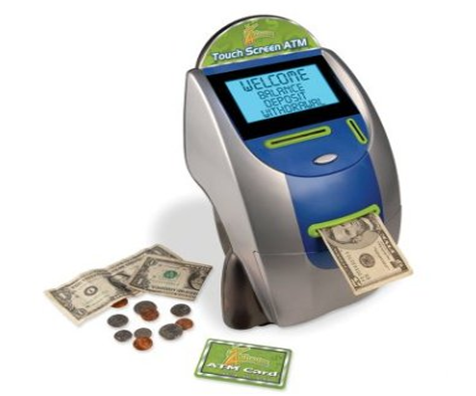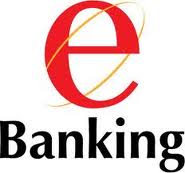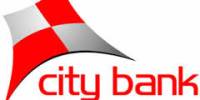Electronic Banking in Bangladesh
In this age of information technology, electronic communication is the cornerstone of a country for its business, every government agency and economy. Modern banks play a pivotal role in promoting economic advancement of a country. Electronic banking is a modern banking system that delivers the new and traditional banking products and services to the customers electronically. Electronic banking systems allow business parties or individual to pay directly or to debit accounts via telecommunication systems. It provides users, working with a home computer attached by network to their bank, with the ability to authorize payments, reconcile accounts, and access a variety of other banking services with the help of ATM (Automated Teller machine), visa card, master card, Q-cash, E-cash, Ready cash, mobile, internet etc. This paper represents the scenario of electronic banking in Bangladesh how it is up surging, makes our country with more state of the art facilities and also highlights some drawbacks and recommendations of overcoming the drawbacks of electronic banking.
In Bangladesh, the expansion of e-banking is beset with several infrastructural, institutional, and regulatory constraints such as inadequate availability of reliable and secure telecommunication infrastructure, absence of a backbone network connecting the whole country, poor ICT penetration in the banking sector, lack of skilled manpower and training facilities, absence of supportive policies, guidelines, rules and regulations relating to e-transactions and the like. Despite the constraints, efforts by the Bangladesh Bank in modernizing the country’s payment system and commitment by the government in building ‘Digital Bangladesh’ have brought competition among the scheduled banks to improve banking services and rapidly adopt e-banking on a wider scale. This note provides a critical overview on development of e-banking in Bangladesh and future prospects for better understanding the issue that includes concept of e-banking, present status of scheduled banks in adopting e-banking services, and prospects of e-banking in Bangladesh on the basis of current trend in developing the ICT infrastructure in the country as well as ICT penetration in the banking sector that follows some policy suggestions for BB, Govt. of Bangladesh and scheduled banks so that optimum benefit through e-banking may be obtained.
Introduction
Despite huge demand from the business community as well as the retail customers particularly the urban customers, electronic banking (e-banking) in Bangladesh is still at a budding state due mainly to a number of constraints such as unavailability of a backbone network connecting the whole country; inadequacy of reliable and secure information infrastructure especially telecommunication infrastructure; sluggish ICT penetration in banking sector; insufficient legal and regulatory support for adopting e-banking and so on.1 In Bangladesh, telephone connectivity is inadequate, cost of PCs are still beyond purchasing capacity of most people, internet connection is costly, IT literacy is yet to reach satisfactory level, banking sector lacks skilled IT personnel, and huge investment requirement for establishing technology based banking services are prime drawbacks. In this backdrop, with high potential of e-banking, Bangladesh Bank as the regulator of banking and financial sector, government of Bangladesh, and the scheduled banks together need to come forward with necessary initiatives for successful introduction of e-banking in Bangladesh.
The concept of e-banking includes all types of banking activities performed through electronic networks. It is the most recent delivery channel of banking services which is used for both business-to-business (B2B) and business-to-customer (B2C) transactions. However, in true sense, e-banking includes activities like payment of bills and invoices, transfer of funds between accounts, applying for a loan, payment of loan installments, sending funds to third parties via emails or internet connections regardless of where the client is located. The definition of e-banking varies amongst researchers partially because electronic banking refers to several types of services through which a bank customer can request information and carry out most retail banking services via computer, television or mobile phone (Daniel 1999; Molls 1998; Sathye 1999). On the other hand, Burr (1996) describes e-banking as an electronic connection between the bank and customer in order to prepare, manage and control financial transactions. In brief, e-banking is not a banking product or service; rather it explains the way transactions are conducted. Leow, Hock Bee (1999) state that the terms PC banking, online banking, Internet banking, telephone banking or mobile banking refers to a number of ways in which customer can access their banks without having to be physically present at the bank branch. Therefore, e-banking covers all these ways of banking business electronically.
Since e-banking offers some smart services benefiting both banks and customers compared with traditional banking system, it has become imperative to make necessary room for the scheduled banks to flourish e- banking. Among others, attractiveness of e-banking includes: it lowers transaction cost; provide 24-hour services; ensure increased security and control over transactions; reduces fraud risk; performs higher volume of transactions with less time; increases number and volume of value payment through banks; allows remote transactions facilities that replace physical presence of a customer in a bank branch and; increases transaction speed and accuracy. On the other hand, traditional banking is time-consuming and more costly and therefore, e-banking is replacing traditional banking all over the world. In Bangladesh, e-banking facilities are yet to be fully developed although some technology driven products and services have been in operation over the last few years. The existing technology driven products and services offered by the traditional banks are ATM services, debit card and credit card, transactions through POS terminals, inter-branch online transactions through individualized online closed network of individual bank, limited customer services provided through internet and membership of SWIFT allowing scheduled banks to conduct wireless transactions especially e-transactions.2 All these technology based products and services have obviously unlocked the way to step toward e-banking. Moreover, as a part of modernizing national payment and settlement system, Bangladesh Automated Clearing House (BACH) that includes Bangladesh Automated Cheque Processing System (BACPS), and Bangladesh Electronic Fund Transfer Network (BEFTN), is being implemented under the “Remittance and Payments Partnership” (RPP) project of the Bangladesh Bank funded by DFID-UK is expected to speed up the adoption of e-banking as well.
In this context, it is important to recognize that the present state of technology based banking in Bangladesh permits the banks to perform B2C transactions only whereas B2B transactions are yet to be established. Successful implementation of e-banking will help to conduct both B2C and B2B transactions.
Present Status of e-Banking
E-banking at per international standard is yet to develop in Bangladesh. At present, several private commercial banks (PCBs) and foreign commercial banks (FCBs) offer limited services of tele-banking, internet banking, and online banking facilities working within the branches of individual bank in a closed network environment. As a part of stepping towards e-banking, the FCBs have played the pioneering role with adoption of modern technology in retail banking during the early 1990s whereas the state-owned commercial banks (SCBs) and PCBs came forward with such services in a limited scale during the late 1990s. Moreover, the banking industry as a whole, except for the four specialized banks (SBs), rushed to offer technology based banking services during the middle of the current decade. The existing form of e-banking that satisfies customer demand in banking activities electronically throughout the world are PC banking or PC home banking that include online banking, internet banking, mobile banking, and tele-banking.
PC banking or PC home banking
PC banking refers to use of personal computer in banking activities while under PC home banking customers use their personal computers at home or locations outside bank branches to access accounts for transactions by subscribing to and dialing into the banks’ Internet proprietary software system using password. PC banking or PC home banking may be categorized into two types such as online banking and Internet banking.
Online banking
Transactions in online banking are performed within closed network for which the customer use specialized software provided by the respective bank. International standard online banking facilities are expanding in Bangladesh. At present, 29 scheduled banks offer any branch banking facilities through their respective bank online network that provides facilities like transaction through any branch under the respective bank online network; payment against pay order or pay order encashment, demand draft encashment, opening or redemption of FDR from any branch of the same bank; remote fund transfer, cash withdrawal, cash deposit, account statement, clearing and balance enquiry within branches of the same bank; and L/C opening, loan repayment facility to and from any branch of respective bank under its own online network. Inter-bank transactions or transaction between inter bank branches are yet to expand. Under the modernization program of the National Payment and Settlement System, Bangladesh Automated Clearing House (which includes Bangladesh Automated Cheque Processing System and Bangladesh Electronic Fund Transfer Network) is scheduled to come into effect from September 2009 followed by implementation of online banking at per international standard in near future.
Internet banking
Internet banking refers to the use of internet as a remote delivery channel for banking services which permits the customer to conduct transactions from any terminal with access to the internet. It is the WWW through which banks can reach their customers directly with no intermediaries. Internet banking in true sense is still absent in Bangladesh. Only 7 out of 48 banks are providing some banking services via internet that include account balance enquiry, fund transfer among accounts of the same customer, opening or modifying term deposit account, cheque book or pay order request, exchange rate or interest rate enquiry, bills payment, account summary, account details, account activity, standing instructions, loan repayment, loan information, statement request, ,cheque status enquiry, stop payment cheque, refill prepaid card, password change, L/C application, bank guarantee application, lost card (debit/credit) reporting, pay credit card dues, view credit card statement, or check balance. The core banking activities like fund transfer to third party, cross border transactions and so on are still uncovered by internet banking offered by the scheduled banks in Bangladesh.
Mobile banking
Mobile banking (also known as M-banking or SMS banking) is a term used for performing balance checks, account transactions, payments etc. via a mobile device such as a mobile phone. Mobile banking is most often performed via SMS or the Mobile Internet but can also use special programs called clients downloaded to the mobile device. The standard package of activities that mobile banking covers are: mini-statements and checking of account history; alerts on account activity or passing of set thresholds; monitoring of term deposits; access to loan statements; access to card statements; mutual funds/equity statements; insurance policy management; pension plan management; status on cheque, stop payment on cheque; ordering check books; balance checking in the account; recent transactions; due date of payment (functionality for stop, change and deleting of payments); PIN provision, change of PIN and reminder over the internet; blocking of (lost/stolen) cards; domestic and international fund transfers; micro-payment handling; mobile recharging; commercial payment processing; bill payment processing; peer to peer payments; withdrawal at banking agent;3 and deposit at banking agent. Despite huge prospects, only a few banks adopted mobile banking in Bangladesh during the last year.
Tele banking
Tele banking refers to the services provided through phone that requires the customers to dial a particular telephone number to have access to an account which provides several options of services. Despite huge potential, tele banking services have not been widened enough in daily banking activities in Bangladesh. Only four banks so far provide a few options of tele-banking services such as detail account information, balance inquiry, information about products or services, ATM card activation, cheque book related service, bills payment, credit card service and so on. Funds transfer between current, savings and credit card account, stock exchange transactions etc are still inaccessible through tele-banking in Bangladesh.
Prospects of e-Banking
E-banking is now a global phenomenon. Apart from the developed countries, the developing countries are experiencing strong growth in e-banking. The Bank of Thailand has created an industry payment body to involve other stakeholders, in particular from commercial banks which take leading responsibility for the development of e-payment system and technologies. Internet banking in Korea has increased at a rapid pace. Korea is also leading in online brokerage and mobile banking. In Southeast Asia, internet banking is also developing rapidly in Thailand, Malaysia, and Singapore and to a lesser extent in Philippines (Mia et. al. 2007). In Nepal, ATMs are the most popular electronic delivery channel for banking services but only a few customers are using internet banking facilities. Among others, Nepal’s commercial banks have adopted Credit card, tele-banking, and SMS-banking.
Remittance (Electronic Way)
Today’s fast changing electronic banking channels have massively improved the flow of remittance across the world. In Bangladesh, Banks have grown up relations with many international financial agencies, or intermediaries to master the inflow of remittance into the country from the expatriates working in foreign countries. A few such operators working in Bangladesh are: Western Union Money Transfer, Money Gram, XPress Money.
CallCenter
Call center is a streamlined customer interface and offers a range of banking services through its call center agents. Customers are now getting improved services at a reduced cost in an exciting manner. Available services at call center are:
Account related services
Balance inquiry, transaction inquiry, duplicate statement, cheque book request, ATM/Debit card hot listing, and loan outstanding etc.
Product Information
Deposit accounts, Personal loan, Savings and current accounts, Debit card, Rates and tariff Inquiry, exchange rates, lending rates, deposit rates, tariff etc.
Other Services
Complaints handling, account opening procedure, Bank Information, change request etc.
Findings of the Study
Present Status of Various forms of E-Banking in Bangladesh: Total 40 banks (both public
and Pvt. Commercial banks) were surveyed and the results are summarized as below:
| SL. | Various Forms of E-Banking Services | Number of Banks having on line modes of service delivery | % |
| 1 | ATM | 30 | 30/40 = .75 |
| 2 | SMS Banking | 19 | 19/40 = .475 |
| 3 | Electronic Fund Transfer (EFT) | 22 | 22/ 40 = .55 |
| 4 | Virtual Banking | 7 | 7/ 40 = .175 |
| 5 | Internet Banking and WAP | 21 | 21/ 40 = .525 |
| 6 | Any Branch Banking | 35 | 35/ 40 =.875 |
| 7 | Tele-banking | 21 | 21/40 =.525 |
| 8 | Point Of Sales (POS) Service | 21 | 35/ 40 = .875 |
| 9 | SWIFT Channel | 40 | 40/40 = 1.00 |
| 10 | Remittance (Electronic Way) | 31 | 31/ 40 = .775 |
| 11 | CallCenter | 7 | 7/ 40 = .175 |
Table: Position of E-Banking in Bangladesh (As on January 31, 2011)
Status of Computerization and Electronic Banking System in Bangladesh
There are a total of 49 scheduled public and private banks in the country. Here there are four state owned commercial banks (Nationalized Commercial Banks- NCBs) have 3496 branches, five specialized banks (DFIs) have 1311 branches, 30 local private commercial banks (Private Commercial Banks-PCBs) have branches of the scheduled banks in the country. The banking system of our country, depending on computerization can be classified into three categories: (i.) Completely computerized (ii.) Partially computerized (iii) Not computerized. Standard Chartered Grindlays Bank Ltd., City Bank NA, American Express Bank, HSBC etc are completely computerized banks in our country. All privates and state owned banks are partially computerized and not computerized. The overall picture of computerization in the banking sector of our country presented in the
following table
Computerized Branches in different types of Commercial Banks
|
Branches with various facilities | Availability in Banks | ||
| NCBs | PCBs | FCBs | |
| Computerized Branches | 19% | 38% | 100% |
| Number of Branches Linked within branches | 3% | 1% | 76% |
| Number of Branches Linked with other branches | 0.86% | 22% | 76% |
The overall computer density in the banking sector is 1.64. For foreign commercial banks (FCBs) the computer density is 45.34, where as for NCBs the ratio is only 0.41. The specialized bank scenario is almost same as the NCBs, 0.43. On the other hand, private commercial banks have comparatively higher ratio, 4.94. As a whole 81.81 percent bank does not have any local area network (LAN), 30 percent have WAN (Wide Area Network) but for some banks many branches are outside of WAN connectivity. At present, all of the foreign banks of our country are using online banking system, they are invested a lot for their automation banking services. For this reason, they are increasing market share every year. They are the pioneer of implementing electronic banking systems in Bangladesh, but now most of the private banks of our country are using electronic banking systems.
Recently a number of commercial banks of Bangladesh have become the member of Belgium based Society for Worldwide Interbank Financial Telecommunication (SWIFT). For international payment settlement 33 percent of banks are using now SWIFT. With the activation of the SWIFT system banks enjoy instant, low-cost, speedy and reliable connectivity for L/C transmission, fund transfers, message communication and worldwide financial activities. Earlier only foreign banks of this country were availing this facility.
Name of Some Electronic Banks in Bangladesh
Actually cent percent online banking is not available in our country. There are some banks that provide online and manual electronic banking services. The names of the some banks, type of services, electronic payment and their web addresses are given in the following table (http://www.bangladesh-bank.org/).
| Name of the Banks | Type, Services and Payment Method | Web Address |
| Dutch-Bangla Bank Ltd. | ATM member of E-cash | Http://www.agranibank.org/ |
| Arab Bangladesh Bank Ltd | Q-Cash, Member of shared ATM, Visa Electron and visa credit card | http://www.abbankonline.com/ |
| BRAC Bank Ltd. | Internet Banking, ATM Service, member of SWIFT | http://www.bracbank.com/ |
| Bank Asia Ltd | Member of ATM in E-cash, SMS banking etc | http://www.bankasia-bd.com/ |
| Agrani Bank | Internet Banking, ATM & Q-cash, Credit card, Debit card etc. | http://www.dutchbanglabank.co m/ |
| Dhaka Bank Ltd. | Member of E-cash | http://www.dhakabank.cm.bd/ |
| Eastern Bank Ltd. | Internet Banking, ATM & Q-cash, Debit card etc. | http://www.ebl-bd.com/ |
| HSBC Ltd | Full online transaction, Easy pay, ATM, Credit card, Mobile banking etc | http://www.bd.hsbc.com/bd/ho me.htm |
| Islami Bank Bangladesh Ltd. | Some online Branch, Member of ATM E-cash | http://www.islamibankbd.com/ |
| Janata Bank | Debit card, Ready Cash | http://www.janatabank-bd.com/ |
| Jamuna Bank Ltd. | ATM service | http://www.jamunabankbd.com / |
| Mercentile Bank | ATM Service | www.mblbd.com |
| Name of the Banks | Type, Services and Payment Method | Web Address |
| National Bank Ltd. | ATM service | http://www.nblbd.com/ |
| NCC Bank Ltd. | Syndicate Banking, E-cash | http://www.nccbank-bd.com/ |
| Pubali Bank Ltd. | Q-Cash service | http://www.pubalibangla.com/ |
| Prime Bank Ltd. | Online for valued client, Master card etc | http://www.prime-bank.com/ |
| Rupali Bank Limited | http://www.rupali-bank.com/ | |
| Standard Chartered Grindlays Bank Ltd. | Fully online transaction, ATM, Credit card, Debit card etc | http://www.standardchartered.c om/bd/ |
| Sonali Bank | http://www.sonalibank.com.bd/ | |
| SouthEast Bank Limited | Syndicate banking, ATM member of E-cash | http://www.southeastbankbangladesh. com/ |
| State Bank of India | Online checking account, Syndicate Banking , ATM member of E-cash | http://www.statebankofindia.co m/ |
| Social Investment Bank Ltd. | Syndicate Banking, ATM member of E-cash | http://www.siblbd.com/ |
| Shahjalal Islami Bank Ltd. | Online services, Automated Accounting etc. | http://www.shahjalalbank.com. bd/ |
| Commercial Bank of Ceylon Limited. | ATM service | www.combank.net |
Objective
The objectives of this paper are as follows:
• To describe the different types of electronic banking system
• To highlight the importance of electronic banking
• To give the status of electronic banking system in Bangladesh
• To give the idea of different electronic payment system of electronic banking
• To identify the problem areas of electronic banking in Bangladesh
• To measure the customer satisfaction of the electronic banking in Bangladesh by talking with industry experts and bank officials.
• To make the necessary recommendations to solve the problems of electronic banking system.
Mythology
The data for this paper have been collected both from primary and secondary sources of information. Primary data have been collected from the different banks of Dhaka City, Bangladesh through questionnaire and secondary data have been collected from various published materials and Internet resources in 2007. Major findings of the study are represented in the tabular and text format
Basic Components of Electronic Banking
An electronic banking system requires the following four components—
Banking system software
Communication Network
Delivery Channel
Switching system
1. Banking system software:
By using computer software package, banks can deal with the transaction of cash deposit, withdrawals, bill payment, bill collection, salary and settlement of provident funds, making accounting reports and statements etc. it does not require any use of papers to prepare journals, ledgers, vouchers or notes.
2. Communication network:
It is an important issue in an online banking. In some cases dial-up telephone and in other cases radio link is used for communication network.
3. Delivery channel:
These channels are used in corporate and retail banking, as well as to the individual or family oriented banking. Modern banks and financial institutions are providing facilities like balance reporting, accounts keeping, domestic and international payments, trade financing, monitoring, netting, cash withdrawals and factoring and other sorts of services related to these by using banksys, uroclear, swift etc.
4. Switching system:
To sort the transactions data in due places, e-banking network and various communication tools in bank host computer requires the use of switching system. It helps to prepare various reports and monitor the implementation of those.
Types of Electronic Banking
Electronic banking system provides customer services by means of various techniques or products. Types of services offered are different for each single product. In the following table, the basic types of electronic banking products are presented—-
AUTOMATED TELLER MACHINE (ATM)
Among the electronic fund transfer services, ATM is the most widely used and popular. With this automated computing machine, clients can deposit or withdraw any time of 24 hours a day. With the help of this machine fund can be transferred from one account to another and loan can be repaid. This automated machine can be established at the bank’s lobby, at the clients business avenues, apartment complex, busy commercial areas, shopping centers, factories etc. through ATM service, bank can render its retail services to the clients door. Thus clients can save their time and the transactions seem to be easy to them. On the other hand, banks earn their profit by providing services at lower cost.

Objectives of ATM
ATM has some objectives that make it popular:
Reducing internal operational expenses and increasing profit by increasing the market share are the main objectives of establishing ATM program. As ATM is an automated system, so there is no need to engage any employee to provide deposit and withdrawal services. As a result, periodic cost cutting can be possible.
Create market in the domestic and foreign countries for their banks and to sustain in the competition.
To provide highly efficient services in this modern age of connectedness.
To ensure the computational accuracy of the bank.
How does a customer operate ATM?
Banks supply plastic cards to their clients. Each card has its distinct number, client’s name, and signature of the client with magnetic stripe. Each client has a PIN (Personal Identification Number). During transaction, client put the card into the card input/ reader. Then ATM instructs its client to input the PIN. PIN is to be input into the machine within a specified time limit (Usually 30 to 90 seconds). If the client fails to input in due time or the PIN is wrong, the machine will take the card inside of it and the card cannot be retrieved at that time. Then clients have to go physically to the bank and get their cards if the authority is satisfied with the cause of failure.
If the PIN is correct, the machine asks the client about the type of the service. If the clients want to withdraw cash, then it asks the amount. The amount needs to be input with the numerical keyboard. After typing the amount, client will press the “Enter key” and within few seconds receive the cash, along with the card and transaction receipt and the machine became prepared for the next transaction. Clients are required to change their transaction types before the enter key. Because once the key is pressed, there is no other alternative to change the transaction mode.
Components of ATM:
An ATM mainly consists of two parts like input devices and output devices.
a) Input devices: the components of input devices of an ATM are as follows:
Card reader: The card reader captures the account information stored on the magnetic stripe on the back of an ATM/debit or credit card. The host processor uses this information to route the transaction to the cardholder’s bank.
Keypad: The keypad lets the cardholder tell the bank what kind of transaction is required (cash withdrawal, Balance inquiry etc.) and for what amount. Also, the bank requires the cardholders Personal Identification Number (PIN) for verification. Federal law requires that the PIN block be sent to the host processor encrypted form.
b) Output devices:
An ATM has following four output components:
Speaker: The speaker provides the cardholder with auditory feedback when a key is pressed.
Display Screen: The display screen prompts the cardholder through each step of the transaction process. Leased line machines commonly use a monochrome or color CRT (Cathode Ray Tube) display. Dial-up machines commonly use a monochrome or color LCD.
Receipt printer: The receipt printer provides the cardholder with a paper receipt of the transaction.
Cash dispenser: The heart of an ATM is the safe and cash-dispensing mechanism. The entire bottom portion of most small ATMs is a safe that contains the cash.
Debit Card
Debit card is one of the systems of electronic fund transfer. It is called cash card or asset card. Usually, in debit card, funds are directly debited to the clients deposit accounts. Debit cards can be explained in the following ways-
Debit card is one of type of special plastic card issued by the banks or financial institutions to the depositors, which hold magnetic coded number. The transactions can be operated as required on the basis of the recognition of the magnetic coded number by the machine. The holder of the debit card can easily operate Automated Terminal Based payment. Money can be withdrawn from deposit account and fund can be easily transferred in electronic way with this card.
Credit Card
Credit card is a popular process in retail electronic banking. Generally, if the clients have creditworthiness or have enough money in the deposit account, then the bank provides this plastic cash to the clients. In spite of having debit balance in the deposit account, a client can use this card. Generally, in a credit card, the loan account of a client is debited to reimburse the transactions conducted through the credit card. This card is used for payment of product or service or for withdrawing cash from some specific instructions.
Point of Sale (POS) Service
Under POS service, card owner’s accounts became debit and seller’s accounts became credit for the amount of the purchased goods or services.
Taka can be transferred by two ways:
Seller is required to make a sales draft like credit card. Then this sales draft would debit the card owner’s account and credit the seller’s account.
Respective clients/financial institution/sellers account’s are to be debited or credited by transferring taka from online point of sale terminals.
Main components using in POS from the viewpoint of activities conducting:
Terminates of POS
Concentrators terminals
Switching centre
Bank computer systems
Check Truncation
Check truncation is a process of service where, financial institutions do not return the rejected and un-honoured checks to clients. Financial institutions keep these checks with the monthly statements and provide rejected checks along with monthly statements to the clients.
Financial institutions keep rejected checks till 90 days. If the client finds any inconsistency or difference between the statement provided by the financial institutions and his/her own record, and then he/she can adjust the accounts by communicating with the institution within the “preservation period”.
Home Banking
Through developed electronic fund transfer system, banks can offer its financial services to the doors of customers. Banks at first launch telephone bill payments (TBP) process so that clients can enjoy banking while staying at home. TBP is a fund transfer service by which clients communicate with the financial institutions by phone and authorize them to collect their (clients’) bills, because of which financial institutions debit their client’s account and transfer the funds to the client directed payee account.
Retail Automated Clearing House (ACH) Service
The Automated Clearing House is the electronic network which transfers and clears funds between banking institutions on behalf of merchants and their customers.
ACH is integrated process of service by which payments of different financial institutions are cleared and exchanged in electronic way. ACH is a computer based integrated system and it is the distribution place of paperless transactions. Electronic payments are the substitutes of papers and are recorded in machine-readable from in magnetic tape and one account is debited and another is credited. The participants of ACH system are the members of Automated Clearing House Association. ACH exchanges electronic transactions within a specific geographical area.
Each transaction takes approximately 48 hours to clear, and we strongly suggest that merchants wait five days from the initial transaction date before shipping any goods. This leaves two days to debit the consumer’s account, two days to deposit the funds into the merchant’s account, and one day for the bank to post the transaction.
What is ACH?
Funds transfer system governed by the Rules of the National Automated Clearing House Association, which provides for the inter-bank clearing of electronic entries for participating financial institutions.
Wholesale Electronic Banking
Wholesale electronic banking is such banking systems where banking activities are performed through inter- bank networks.
Generally, the following activities are performed in wholesale banking –
Cash Management
Recently banks and corporations are becoming conscious about cash management to ensure available funds in response to the increase in money market rate. Cash management means.
Raise the speeding up of collection of cheques and bills payable,
Careful control of the cash disbursement,
Monitoring of cash flows,
Investment of the idle money.
The Cash Management Department ensures that funds in transit move safely and on time and maintains an optimum cash position. (The bursar staff processes student receivables, which will be discussed in greater detail in subsequent sections of this chapter.) The primary duties of the Cash Management Department include:
Monitoring daily banking activity;
Managing Automated Clearing House (ACH) transactions and wire transfer activity;
Reconciling credit card transactions;
Managing relationships with banks, credit card companies and check guarantee services;
Processing positive pay files that contain a listing of all checks that have been presented to the bank for payment;
Maintaining unclaimed property files;
Verifying daily manual deposits;
Tracking vouchers and providing backup to Accounts Payable;
Processing vendor payment and student refund checks;
Processing manual credit card refunds;
Reviewing and approving mileage and travel reimbursement requests; and
Maintaining an inventory of system wide depository bags and deposit tickets.
WIRE TRANSFER
Wire transfer is one of the most commonly used methods for transferring money from one person to another. In order to make a wire transfer, a person needs to visit a bank or the cash office. Wire transfer can be made from one bank account to another. In order to make a wire transfer an individual needs to visit a bank and provide detailed order of making the wire transfer. Banks require IBAN and BIC codes for knowing exactly where they need to send the money.
Wife transfer is a process in which funds are transferred from sender to receiver quickly and in due time. This type of transfer would be done within or outside of the country.
Wire Transfer activities of electronic banking system include the following 4 stages
1) Payment ordering parties: The person here decides to transfer fund to the recipient account
2) Payment ordering mechanism: In this stage, the sender instructs his bank to transfer funds to the specific receiver’s accounts with the help of wire transfer.
(3) Payment processing and delivery: In this stage, bank transfers fund from one account to another through fed wire, Bank wire, Chips, and SWIFT.
(4) Payment advising: After transferring funds, banks in this stage send messages to the recipient. Banks use the following 4 networks to send messages of fund transfer.
a. Fed wire (The Federal Reserve Communication system)
b. Bank wire
c. Chips (The Clearing House Interbrain Payment Service)
d. SWIFT (The Society for Worldwide Inter-bank Financial Tele Communication).
Corporate Clearing House
By clearing house, financial institutions clear and exchange their electronic payments. At present, in developed countries more than half a million people are using ACH system in paying their salary. Moreover, others are using ACH to serve other purposes. For example, large insurance companies collect their insurance premiums by using the debit entry of depository transfer check. Cash concentration strategy through ACH is very popular and widely used service. Corporations are going for ACH service after considering Financial the facilities (cost reduction, receipt of funds within one day, etc.) of the collection of insurance premium and cash concentration strategy.
Other Types of Electronic Banking
The terms ‘PC banking’, ‘online banking’, ‘Internet banking’, ‘Telephone banking’ or ‘mobile banking’ refer to a number of ways in which customers can access their banks without having to be physically present at the bank branch.
E-banking may be understood as term that covers all these ways of banking business electronically (Leow, Hock Bee 1999).
Tele-banking
Tele-banking service is provided by phone. To access an account it is required to dial a particular telephone number and there are several options of services. Options included-
• Checking account balance
• Funds transfer between current, savings and credit card accounts
• Bill payments
• Stock exchange transaction
• Receive statement via fax
• Loan payment information (http://www.csboak.com/telebank.htm)
PC Banking
The increasing awareness of the importance of literacy of computer has resulted in increasing use of personal computers through the entire world. Furthermore, incredible plummet of cost of microprocessor has accelerated the use of computer. The term ‘PC banking’ is used for banking business transacted from a customer’s PC. Using the PC banking or home banking now customers can use their personal computers at home or at their office to access their accounts for transactions by subscribing to and dialing into the banks’ Intranet proprietary software system using password.
Types of PC Banking
Basically, there are two types of PC banking.
The first type is online banking, in which bank transactions are conducted within closed networks. The customer needs specialized software provided by his bank. The second type is Internet banking, which German banks have been offering since the mid-nineties, although the only product they were offering at the time was information. Unlike closed networks, Internet banking permits the customer to conduct transactions from any terminal with access to the Internet.
Internet Banking
Internet banking would free both bankers and customers of the need for proprietary software to carry on with their online banking transactions. Customer behavior is changing rapidly. Now the financial service is characterized by individuality, independence of time and place and flexibility.
These facts represent huge challenges for the financial service providers. So the Internet is now considered to be a ‘strategic weapon’ for them to satisfy the ever-changing customers’ demand and innovative business needs.
Adequate legal framework and maximum security are the two essential factors for Internet banking. The comprehensive security infrastructure includes layers of security from the network to the browser, including sophisticated encryption that protects customers’ from intrusion when they access the bank over the public network. Actually mobile banking is a variation of Internet banking. Mobile banking is a good example of how the lines between the various forms of e-banking are becoming gradually blurred. Due to the new transmission technologies such as WAP (Wireless Application Protocol), portable terminal like mobile phones, personal digital assistant (PDA) or small hand-held PCs are providing bank customers with access to the Internet and thus paving the way to Internet banking (Islam, Monirul, March 06, 2005).
It assures immense flexibility and makes the financial services independent of time and place. However, the use of mobile banking is still in a nascent state. The slower transmission speed of the WAP standard and the limited amount of information available are just two of the factors inhibiting the use of those terminals.
Advantage of E-Banking
Swift transaction
Digital service
More security rather than traditional banking service
Less time consuming for the transactions
Twenty four hours service
Less risky to carry cash.
Risks in Electronic Banking
With the burgeoning of transactional banking websites, regulatory agencies are increasingly worried about the risks associated with e banking. The Basel Committee report on banking supervision (1998) states that the agency “recognizes that along with the benefits, electronic banking and electronic money activities carry risks for banking organizations, and these risks must be balanced against the benefits”. Following is a review of some of the risks that are inherent in e banking.
Operational Security Risk: External and internal security issues pose perhaps the greatest threat to the growth of e banking. Banks also face the threat of viruses that can be placed in the bank network, or a scenario where a hacker obtains confidential information and then cyber-exhorts the bank with an offer to sell the information back to the bank.
Legal Risk: legal risks can arise due to violations of laws, rules, and regulations. In the world of electronic commerce, where technology and business arc in a state of constant flux, there is considerable ambiguity and uncertainty regarding legal rights. Banks involved in electronic payments, such as stored value cards, must determine whether such transactions impact reserve Requirements. Yet other risks of cross-border regulatory compliance arise as the Internet blurs national boundaries for commerce and payments.
Reputation Risk: Any problems with either security or legal issues can significantly impact the reputation of the bank. This is especially important in the banking industry where public confidence is long touted as paramount. Reputation risk can range from problems of customer dissatisfaction with online services to security breaches and fraud. For instance, identity misrepresentation, or “spoofing”, where bank customer’s arc directed toward a false site, can lead to an irreparable loss of trust between the customers and the bank.
Traditional banking risks: Finally, the traditional banking risks such as interest rate risk, credit risk, or liquidity risk can be exacerbated for a bank that has a significant online lending and/or transactions presence. In May 2001, the Basel Committee has identified 14 risk management principles for electronic banking to help banking institutions expand their existing risk oversight policies and processes to cover their e-banking activities, (Basel Committee report on banking supervision, 2001, publications no. 82). 















